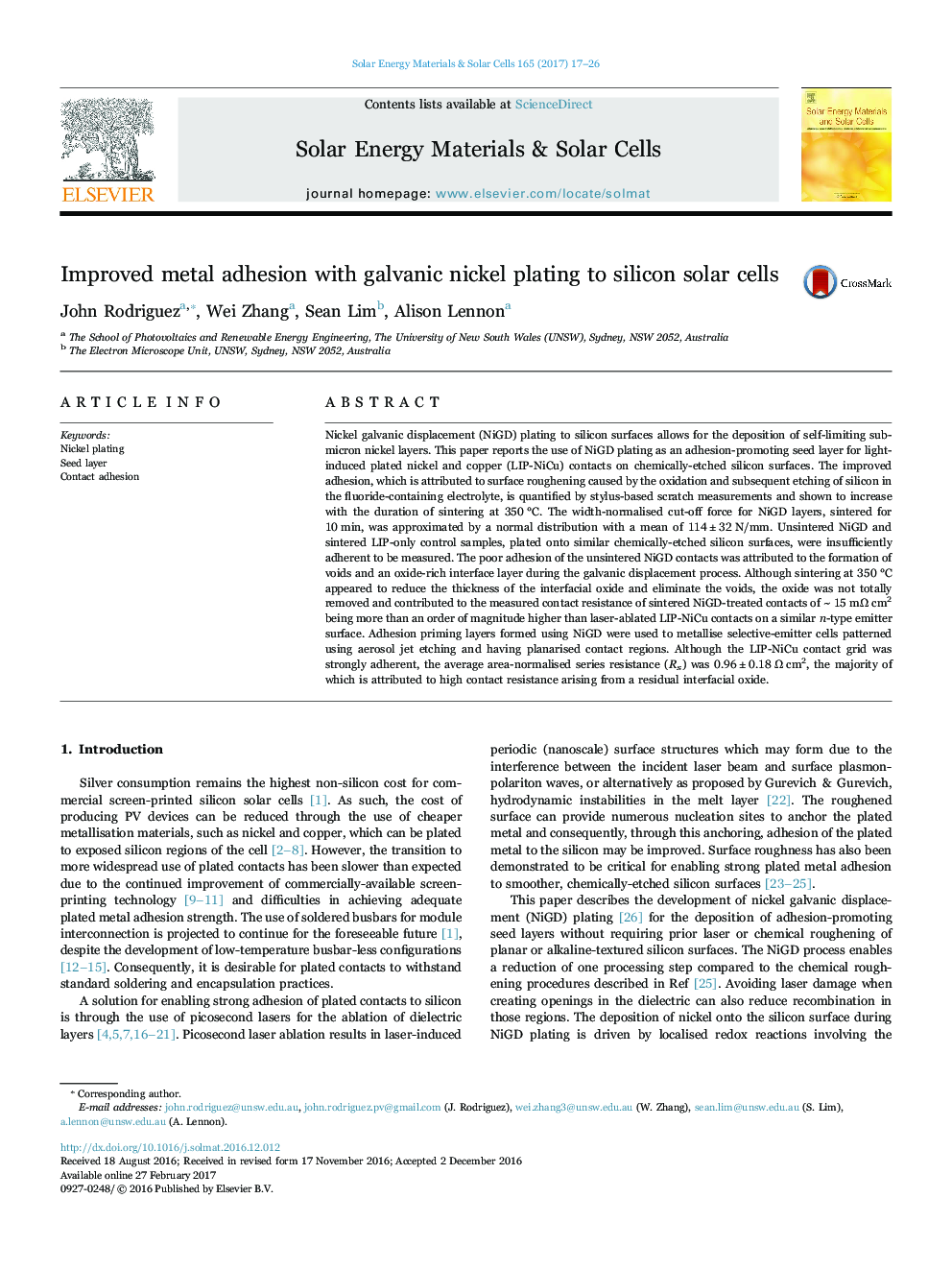| کد مقاله | کد نشریه | سال انتشار | مقاله انگلیسی | نسخه تمام متن |
|---|---|---|---|---|
| 6457134 | 1420658 | 2017 | 10 صفحه PDF | دانلود رایگان |
- Nickel galvanic displacement plating shown to improve contact adhesion.
- Cut-off adhesion strength of 114±32 N/mm measured on chemically-opened contacts.
- TEM images reveal formation of interfacial oxide, causing high contact resistance.
- Presence of voids at silicon-nickel interface detected for shorter sintering times.
Nickel galvanic displacement (NiGD) plating to silicon surfaces allows for the deposition of self-limiting sub-micron nickel layers. This paper reports the use of NiGD plating as an adhesion-promoting seed layer for light-induced plated nickel and copper (LIP-NiCu) contacts on chemically-etched silicon surfaces. The improved adhesion, which is attributed to surface roughening caused by the oxidation and subsequent etching of silicon in the fluoride-containing electrolyte, is quantified by stylus-based scratch measurements and shown to increase with the duration of sintering at 350 °C. The width-normalised cut-off force for NiGD layers, sintered for 10 min, was approximated by a normal distribution with a mean of 114±32 N/mm. Unsintered NiGD and sintered LIP-only control samples, plated onto similar chemically-etched silicon surfaces, were insufficiently adherent to be measured. The poor adhesion of the unsintered NiGD contacts was attributed to the formation of voids and an oxide-rich interface layer during the galvanic displacement process. Although sintering at 350 °C appeared to reduce the thickness of the interfacial oxide and eliminate the voids, the oxide was not totally removed and contributed to the measured contact resistance of sintered NiGD-treated contacts of ~ 15 mΩ cm2 being more than an order of magnitude higher than laser-ablated LIP-NiCu contacts on a similar n-type emitter surface. Adhesion priming layers formed using NiGD were used to metallise selective-emitter cells patterned using aerosol jet etching and having planarised contact regions. Although the LIP-NiCu contact grid was strongly adherent, the average area-normalised series resistance (Rs) was 0.96±0.18 Ω cm2, the majority of which is attributed to high contact resistance arising from a residual interfacial oxide.
Journal: Solar Energy Materials and Solar Cells - Volume 165, June 2017, Pages 17-26
